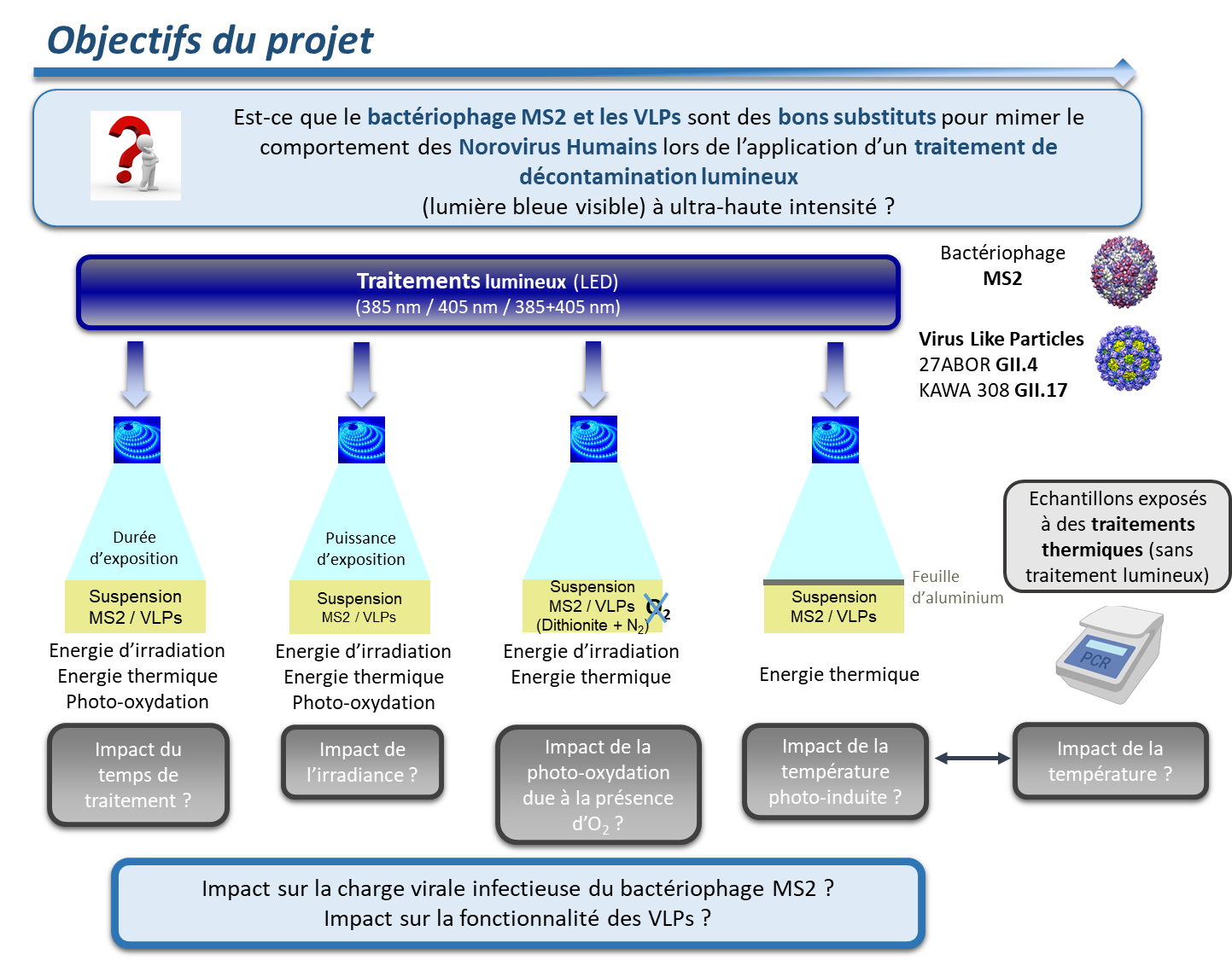ViroLux : viral decontamination by light

Bacteria, parasites and viruses can cause food contamination. Viral infections are one of the main food-related pathologies in humans (ANSES). This research project is part of a drive to improve viral risk control. It aims to acquire new data on the resistance and persistence of virulence of viruses in food matrices in order to develop a new process for destroying viruses based on high-intensity light treatments.
The study focuses on viruses responsible for gastroenteritis, and more specifically human noroviruses (HuNoV), the main aetiological agents of foodborne infections. Due to its physico-chemical characteristics, this enteric virus is highly resistant and can persist for long periods in the environment. Viral particles can persist on solid surfaces as well as in liquids.
In this project, the persistence of viral particles in different food matrices is studied. The study focuses on water as a vector for food contamination in the agri-food sector. Its use in washing raw materials or industrial equipment, or as an ingredient in certain recipes, are all sources of contamination. The project also includes baby vegetable purées as model food matrices. These matrices are widely consumed by children, who are potential targets for noroviruses. In addition, because of their complex composition, these matrices can be used to study the impact of their components on the resistance of viruses to virucidal treatments. It has been shown that sugars and/or fats can have a protective effect on viruses.
The data acquired during this project on the properties of human enteric viruses will provide initial indications of their behaviour when different decontamination processes are applied in industry. However, when decontamination schedules are being evaluated, the use of pathogenic viruses cannot be envisaged at industrial level. It is therefore essential to develop non-pathogenic substitutes (surrogates) that can mimic the behaviour (in terms of infectious power) of viruses during the food decontamination stages. This is why the bacteriophage MS2 was included in this study. MS2 has been shown to be safe in humans, so it can be used as a substitute in our study. The physico-chemical properties of phage MS2 make it highly resistant to UV rays, making it a reference for assessing the efficacy of a virucidal treatment. It is therefore a good candidate for assessing the virucidal efficacy of a light decontamination treatment.
In addition to the virus trials, experiments are also being carried out on synthetic particles, VLPs (Virus Like Particles) derived from human noroviruses. Non-infectious, VLPs are produced in the laboratory in a baculovirus system. They can be produced in large quantities. Easily purified, they are detected using monoclonal antibodies produced in the laboratory. VLPs have the same biological and physico-chemical properties as native human norovirus particles. Because of these properties, they are of interest in the agri-food sector and could eventually be used to validate virucidal treatments on an industrial scale. One of the aims of the project is therefore to determine whether the use of these VLPs as non-pathogenic substitutes for human noroviruses is relevant.
